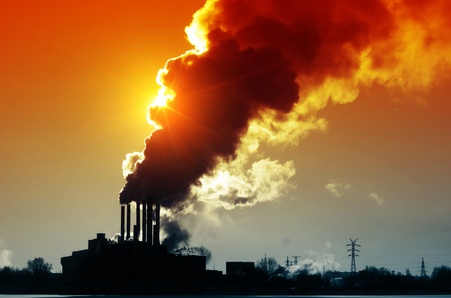Bioenergy with carbon capture and storage (BECCS) can reverse the global warming trend and push temperatures back below the global target of 2°C above pre-industrial levels, even if current policies fail and we initially overshoot this target.

This is according to a new study, published today, 11 July, in IOP Publishing’s journal Environmental Research Letters, which shows that ambitious temperature targets can be exceeded then reclaimed by implementing BECCS around mid-century.
The researchers, from Chalmers University of Technology in Sweden, show that if BECCS is implemented on a large-scale along with other renewable energy sources, temperature increases can be as low as 1.5°C by 2150.
Co-author of the study, Professor Christian Azar, said: “What we demonstrate in our paper is that even if we fail to keep temperature increases below 2°C, then we can reverse the warming trend and push temperatures back below the 2°C target by 2150.
“To do so requires both large-scale use of BECCS and reducing other emissions to near-zero levels using other renewables – mainly solar energy – or nuclear power.”
BECCS is a greenhouse gas mitigation technology based on bioenergy that produces fuel for power plants or transportation while simultaneously removing carbon dioxide from the atmosphere. Trees and crops give off carbon dioxide when they are burnt as fuel, but also act as a carbon sink as they grow beforehand, absorbing carbon dioxide from the atmosphere. These two processes cancel each other out, resulting in net zero emissions of carbon dioxide.
When combined with carbon capture and storage – techniques that aim to pull carbon dioxide out of the flue gases from power plants and redirect it into geological storage locations – the overall carbon dioxide emissions are negative. If applied on a global scale, this could help to reverse global warming.
In their study, the researchers developed an integrated global energy system and climate model that enabled them to assess the most cost-effective way forward for a given energy demand scenario and temperature target.
They find that stringent temperature targets can be met at significantly lower costs if BECCS is implemented 30 to 50 years from now, although this may cause a temporary overshoot of the 2°C target.
“The most policy relevant implication of our study is that even if current political gridlock causes global warming in excess of 2°C, we can reverse the temperature trend and reach targets later. This means that 2°C targets or even more ambitious targets can remain on the table in international climate negotiations,” Azar continues.
However, the authors caution against interpreting their study as an argument for delaying emission reductions in the near-term.
Azar says: “BECCS can only reverse global warming if we have net negative emissions from the entire global energy system. This means that all other CO2 emissions need to be reduced to nearly zero.
“Also, temperatures can only be reduced by about 0.6°C per century, which is too slow to act as an 'emergency brake' if climate damages turn out to be too high. The more we reduce emissions now, the more ambitious targets we can achieve in the long term – even with BECCS.”



